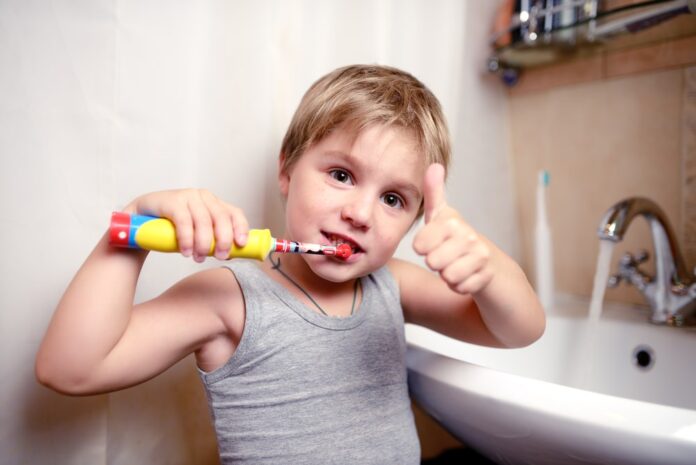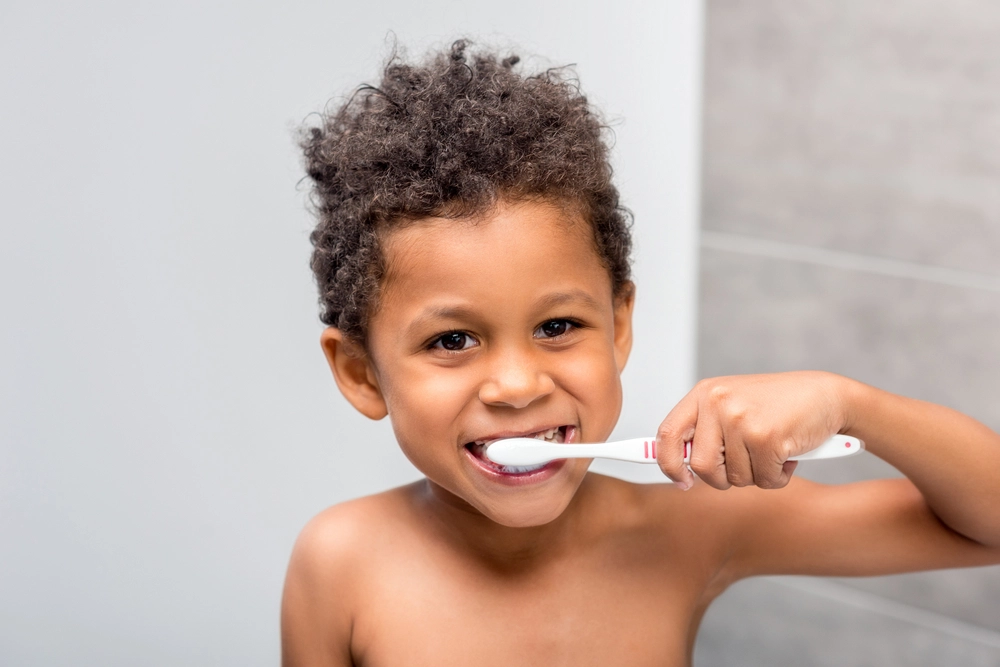When picking a toothbrush for your kids, it is important to think about the specific needs of your children. This can vary greatly depending on their age, the size of their mouth and teeth, and any specific dental issues they may have. Taking into account these specificities can help you find the toothbrush that is perfect for your children and make sure they have the best oral hygiene possible.
Factors to Consider
There are a variety of factors to consider in order to ensure that you get the best toothbrush for your child’s oral health. Atomy states that factors such as size, bristles, handle design, and type should all be taken into account when selecting a toothbrush for your child. Let’s dive into the details.
Manual Type
Manual toothbrushes come in all shapes and sizes and are available in a variety of styles and materials. The most common type is the one with a handle, a head, and a few rows of soft bristles. A good quality manual model should have end-rounded bristles, which are rounded at the tip to avoid irritating gums or harming your teeth. You can also find manual toothbrushes with split heads or tapered heads that make it easier to reach those tricky back teeth.

Electric Type
Electric toothbrushes have become increasingly popular in recent years, and there is now a range of options on the market. Generally speaking, they all provide a more thorough cleaning than manual ones. Any type of electric toothbrush has the potential to remove more plaque and food particles from areas that may be difficult to reach with a manual brush.
Generally, they come in vibrating or oscillating varieties. Vibrating (or sonic) models use a rapid vibration of the brush head to move bacteria and food debris away from teeth surfaces while oscillating (or rotary) models offer spinning action for the same purpose. Oscillating brushes usually rotate in one direction or the other at varying speeds, which helps clean different parts of your mouth more thoroughly than with a manual brush.
Bristle type and density
The bristle type and density can influence how effective the brushing is in removing plaque from teeth.
Soft-bristled toothbrushes are generally recommended for children as they are more gentle on gums. Children’s toothbrushes usually have smaller heads and extra-soft filaments. Wider-spaced, straight-cut bristles may also be beneficial for children — these are designed to provide gentle cleaning power without irritating gum tissue. If you choose an adult-sized brush that has harder bristles, be sure to purchase one with rounded ends on the strands so as not to damage soft tissues in the mouth.
When choosing a model with optimal bristle density, look for one that outlines every contour of your child’s teeth– including spaces between them – and reaches below the gum line (where most plaque forms). A denser concentration of longer yellow or blue bristle strands indicates higher-quality brushes with greater cleaning power. As children get older, they may prefer denser models but it’s important to make sure they still fit comfortably within their mouth without being too big or running into gums while brushing.

Handle design
Many toothbrushes have an ergonomic design that helps you to maneuver the bristles correctly in your mouth, while others come in brighter colors or fun shapes that kids might prefer. Consider how comfortable it is for you and your children to grip the handle and reach all teeth effectively.
Look for models with a no-slip grip on the handle or rubberized thumb rests. This will make it easier for smaller hands to hold onto it while they’re brushing. You may also want to consider handles with a suction cup base so you can hang them up after each use — this will help them stay dry longer, reducing bacterial build-up.
Brush head size
A head that is too large or too small can make brushing more challenging and potentially less effective. The length and width of the brush head should fit comfortably into the mouth and reach all surfaces of the teeth.
If your child has difficulty using a conventional-sized toothbrush, there are specialized brushes available — such as those with smaller, angled heads — to make brushing easier and more comfortable. For young children with tiny mouths, you can also find special toddler toothbrushes that are designed with wide front handles for easier grip control and smaller heads to accommodate their slightly different needs.

Let your kid choose
Letting your child choose their own toothbrush is a great way to help them learn the responsibility of taking care of their oral health. This also encourages them to stick to good habits and helps them understand the importance of proper dental hygiene. Sit down with your children and have them pick out a model based on color, style, or favorite characters.
Let your kid pick the flavor of toothpaste
Choosing the flavor of toothpaste is important for your children as it will motivate them to brush their teeth. Encourage your kids to try out different flavors in order to find the one they like or maybe even a combination of two different flavors. There are many brands that specialize in kids’ toothpaste with fun colors and flavors such as bubblegum, strawberry, blueberry, banana, mint, and more.

Replace toothbrush every 3-4 months
It is important to replace your children’s toothbrushes every 3-4 months to maintain proper oral hygiene. The bristles become worn down with use, which can affect how well they clean teeth and gums. The American Dental Association (ADA) recommends that you replace your child’s toothbrush when it becomes frayed, or at least every three to four months. It is also important to always have a backup toothbrush on hand in case the old one needs to be replaced sooner than expected.
Conclusion
There is no definitive answer to the question of what type of toothbrush is best for your kids. While electric models may be more effective at cleaning teeth, manual models are more affordable and easier for younger children to use. Ultimately, the best toothbrush for your child is the one that they will use regularly and properly. If you’re not sure which type of brush your child will prefer, try letting them try out both types before making a decision.






